Measurement Teaching Resources
Is your math class ready to dive into length measurement, measuring objects, and more measurement practice? Say hello to printable measurement worksheets, games, and digital activities created by teachers for elementary teachers!
This collection of teaching resources was created by our expert math teachers to help students meet Common Core and state-level standards. Each printable and digital download has undergone a rigorous review by the teachers on the Teach Starter team to ensure they’re student-ready — so you can cut down on lesson planning time!
New to teaching this part of the math curriculum? Our teacher team knows what it’s like to suddenly teach a brand-new grade level, so we’ve put together a quick guide to teaching measurement!
What Are the 4 steps of Teaching and Learning Measurement?
Elementary students have to learn a long list of measurement concepts during their stint in elementary school, including:
- length
- liquid volume
- elapsed time
- mass (weight)
- area
- volume of three-dimensional figures
The good news for teachers: Most measurement concepts have very real-world applications for students. That means there's a whole world of ways to get students excited about reading a ruler or tape measure or weighing heavy objects on a scale.
But before you can get there, let's start with the basic steps to work through when you're teaching students how to measure ... well ... anything!
- Direct comparison — One of the earliest steps of learning measurement is learning the attributes that are being measured. For example, students need to learn what length is if they're ever going to measure it. That's where direct comparison (and step 2, indirect comparison), come in. If you put 2 objects side by side, students can directly compare which is longer and which is shorter and start to understand how to measure an object.
- Indirect comparison — What happens when you can't directly compare two objects? You can add a third as a reference point for indirect comparison, thereby increasing student understanding of the attribute being measured.
- Measuring with non-standard units or informal units — Just as students need to understand the attribute of measuring, they also need to understand the concept of the units we use to measure such as inches or pounds. Using non-standard units is the first step to teaching the concept of units, offering students the chance to work with different objects, counting how many of these "units" it takes to make up another. This is the fundamental base of measurement.
- Measuring with standard units — Finally, in the final step of teaching measurement, students move on to using the formal units of measurement and learn to use measurement instruments.
Why Is Teaching Measurement Important?
There are concrete uses for learning measurement that will surely spring to mind — from using a tape measure to measure a space in a home to weighing ingredients when baking to determining the capacity of a juice glass before pouring in the liquid. These are all means for quantifying our environment.
But the benefits of teaching students about measuring lines with a ruler or figuring out mass measurements from largest to smallest go well beyond the obvious. Learning to measure helps students develop spatial and number skills.
- Plus Plan
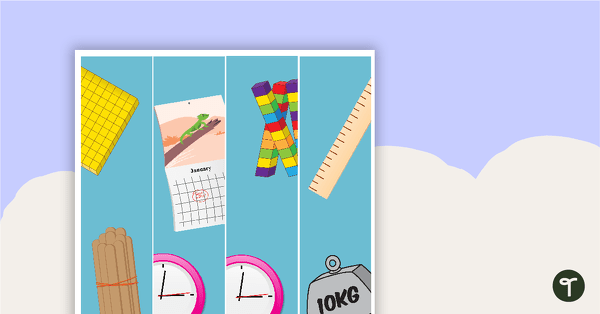
Measurement Classroom Decoration Pack
A pack of page borders and cut-out decorations for your classroom.
- Plus Plan

Time Banner
A 3-page banner to use on your 'Time' display board.
- Plus Plan
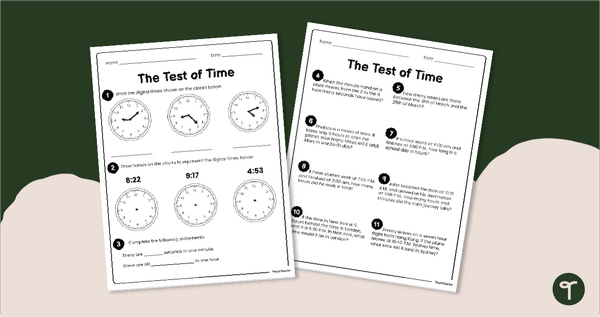
Clock Reading & Elapsed Time Quiz
Assess your students' knowledge of telling time to the minute and working with elapsed time with this Clock Reading, Conversions, and Elapsed Time test.
- Plus Plan
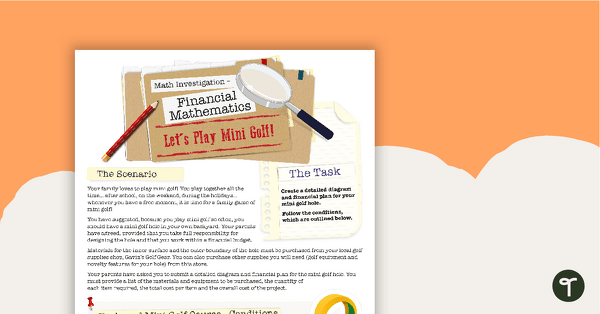
Financial Mathematics Math Investigation - Let's Play Mini Golf!
A mathematics investigation about financial mathematics and measurement, embedded in a real-world context.
- Plus Plan

Months of the Year Poster - Northern Hemisphere
A poster displaying the months of the year.
- Plus Plan
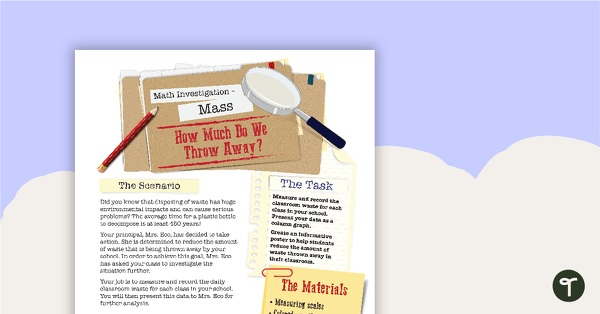
Mass Math Investigation - How Much Do We Throw Away?
A mathematics investigation about measuring mass, embedded in a real-world context.
- Plus Plan
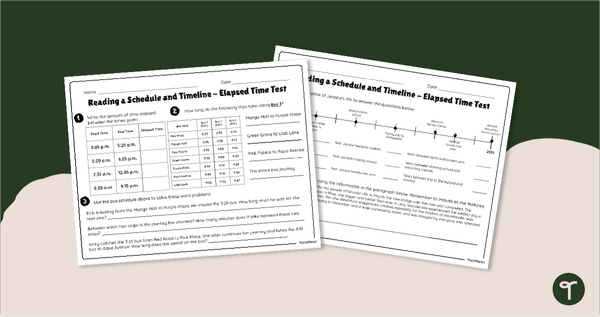
4th and 5th Grade Concepts of Time Assessment
Assess your students' knowledge of elapsed time, reading schedules, and reading timelines with a Concepts of Time Test.
- Plus Plan
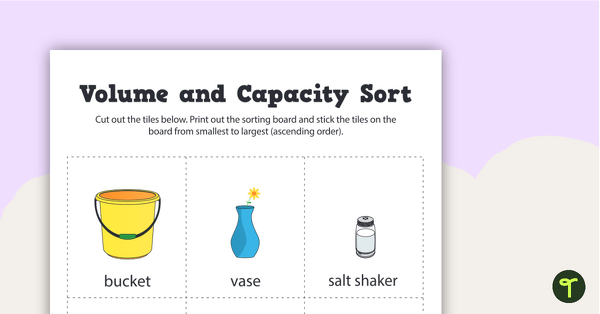
Volume and Capacity Sorting Activity
A sorting activity to practice comparing the capacity of different objects.
- Plus Plan
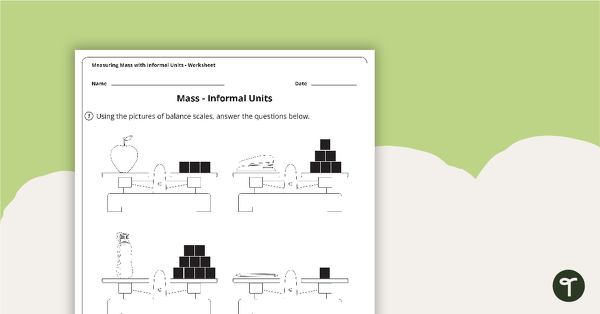
Measuring Mass with Informal Units Worksheet
A worksheet to use when exploring mass and how to measure it with informal units.
- Plus Plan
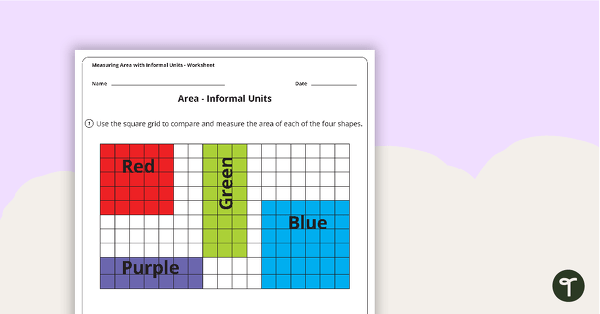
Measuring Area Using Arrays
A worksheet to use when exploring the concept of measuring area using arrays.
- Plus Plan
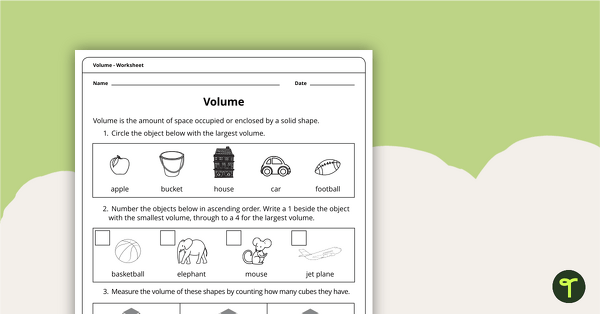
Volume Worksheet
A worksheet to use when exploring the concept of volume.
- Plus Plan
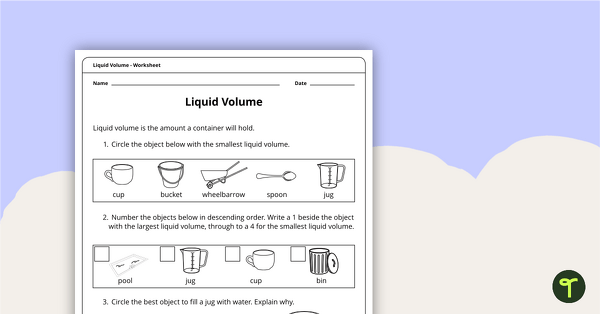
Liquid Volume Worksheet
A worksheet to use when exploring the concept of liquid volume.
- Plus Plan
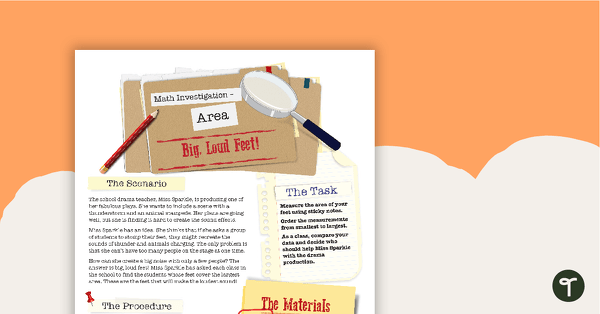
Area Investigation - Big, Loud Feet!
A mathematics investigation involving area using informal units, embedded in a real-world context.
- Plus Plan

Interactive Teaching Clock
Use this interactive clock widget to teach time with fun hands-on learning!
- Plus Plan
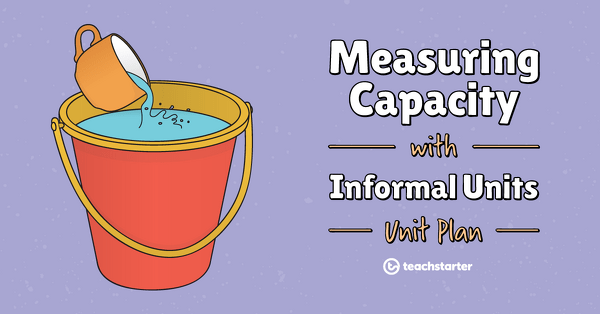
Measuring Capacity with Informal Units
This mathematics unit addresses the concept of measuring, comparing, and ordering capacity using informal units.
- Plus Plan
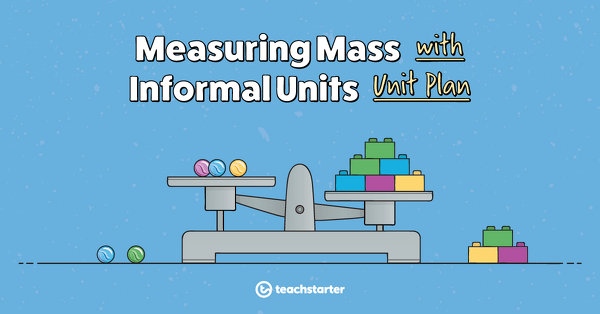
Assessment - Measuring Mass with Informal Units
A 30 minute assessment in which students will demonstrate their knowledge and understanding of mass.
- Plus Plan
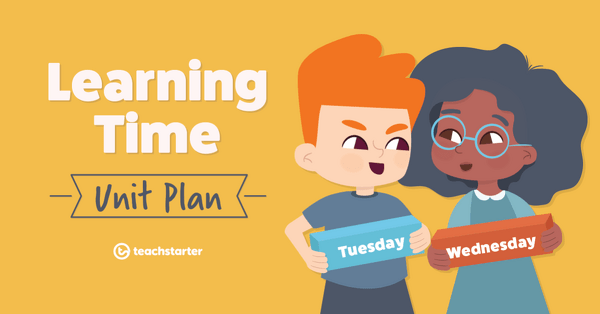
Learning Time! Unit Plan
This Mathematics unit addresses the concept of time for young learners. It focuses on the days of the week, connecting familiar events to particular days, and sequencing events in time order.
- Plus Plan
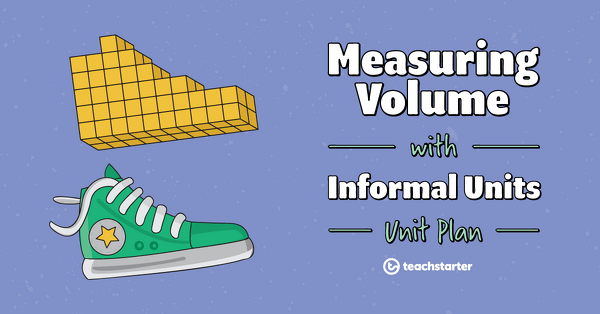
Measuring Volume with Informal Units Unit Plan
This Mathematics unit addresses the concept of measuring, comparing and ordering volume using informal units.
- Plus Plan
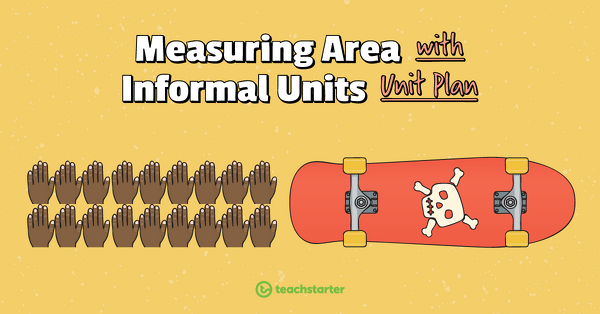
Measuring Area with Informal Units - Unit Plan
This mathematics unit addresses the concept of measuring, comparing, and ordering area using informal units.
- Plus Plan
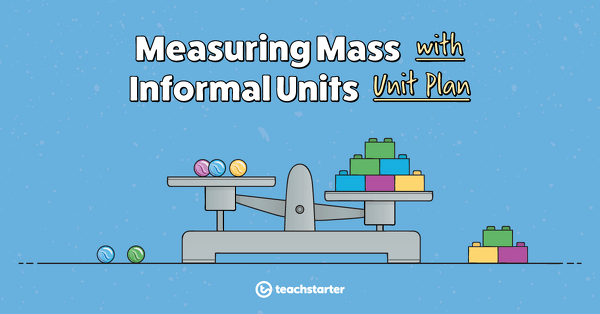
Measuring Mass with Informal Units Unit Plan
This mathematics unit addresses the concept of measuring, comparing, and ordering mass using informal units.
- Plus Plan
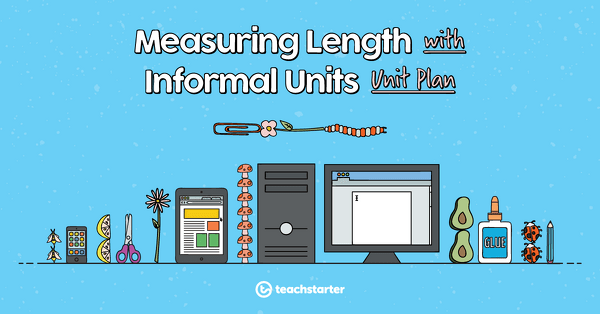
Measuring Length with Informal Units - Unit Plan
This Mathematics unit addresses the concept of measuring, comparing and ordering length using informal units.
- Plus Plan
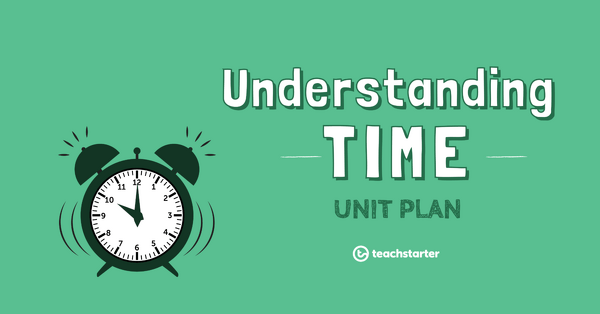
Understanding Time - Unit Plan
This Mathematics unit addresses telling time to the minute, the relationship between units of time, converting between units of time, and using 'am' and 'pm' notation to solve simple time problems.
- Plus Plan
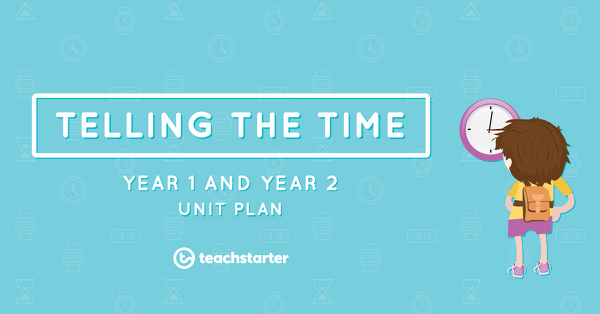
Telling the Time Unit Plan - Grade 1 and Grade 2
This Mathematics unit addresses the concept of telling the time to the hour, half hour and quarter hour.
- Plus Plan
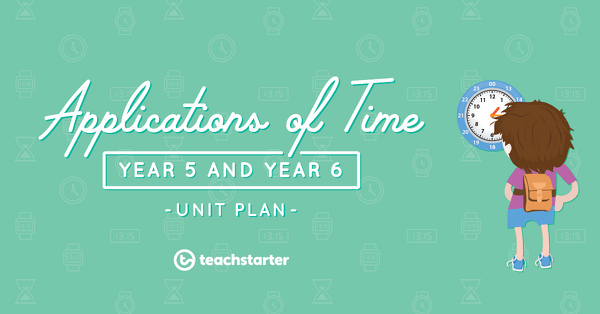
Applications of Time Unit Plan - Year 5 and Year 6
This Mathematics unit addresses the concepts of 12- and 24-hour time, timetables and timelines.
- Plus Plan
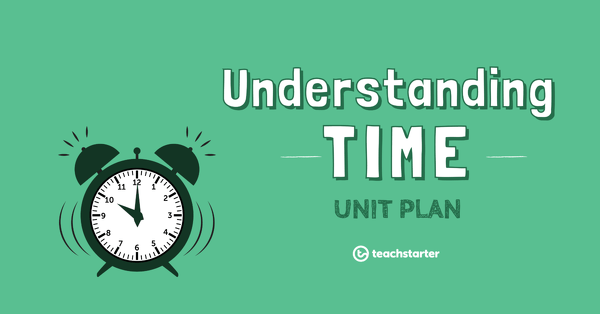
Remember the Time
A 60-minute lesson in which students will tell the time using analog and digital clocks.
- Plus Plan
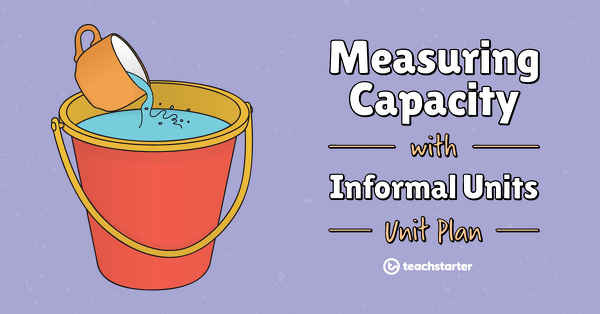
Assessment - Measuring Capacity with Informal Units
A 30 minute assessment in which students will demonstrate their knowledge and understanding of capacity.
- Plus Plan

Review of Capacity
A 60 minute lesson in which students will review the concept of capacity.
- Plus Plan
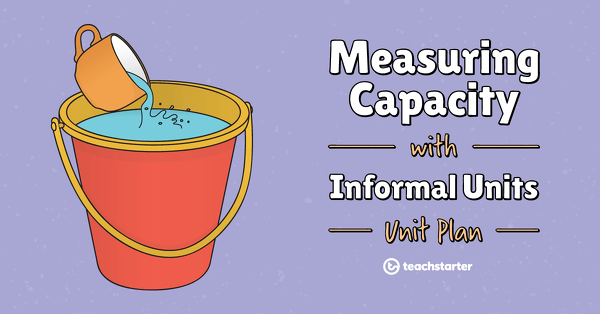
Capacity Investigation - Filling the Fish Tank
A 60 minute lesson in which students will apply their knowledge and understanding of capacity to a real-world situation.
- Plus Plan

Measuring, Comparing, and Ordering Capacities
A 60 minute lesson in which students will estimate and measure the capacity of containers using informal units.
- Plus Plan
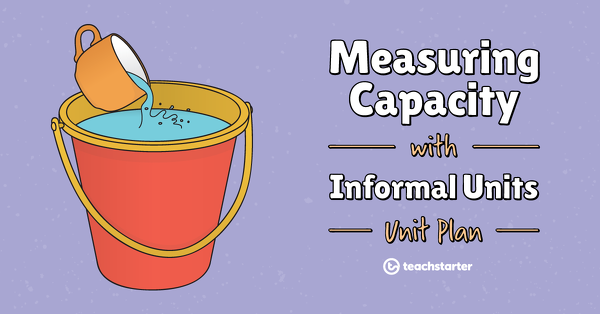
Comparing Capacities
A 60 minute lesson in which students will explore and compare the capacity of containers.
- Plus Plan
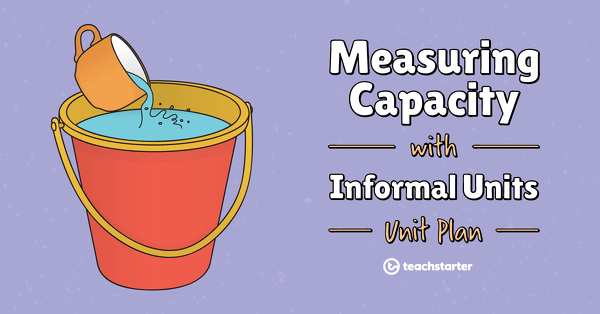
Introduction to Capacity
A 60 minute lesson in which students will be introduced to and explore the concept of capacity.
- Plus Plan
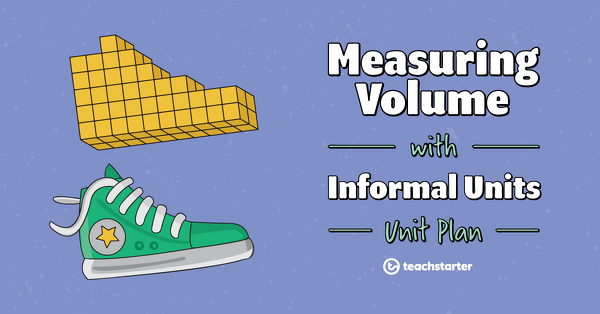
Assessment — Measuring Volume with Informal Units
A 30 minute assessment in which students will demonstrate their knowledge and understanding volume.
- Measurement Worksheets
- Measurement Games
- Measurement Posters
- Measurement Templates
- Measurement Projects
- Measurement for Pre-K
- Measurement for Kindergarten
- Measurement for 1st Grade
- Measurement for 2nd Grade
- Measurement for 3rd Grade
- Measurement for 4th Grade
- Measurement for 5th Grade
- Measurement for 6th Grade